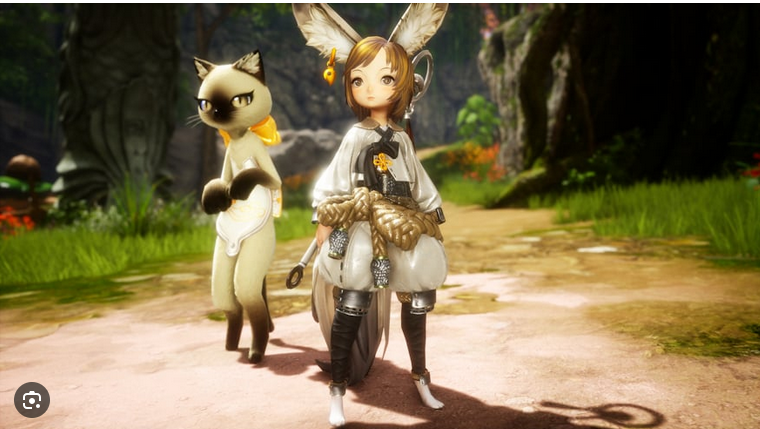Blade & Soul, the once-celebrated martial arts MMORPG developed by NCSOFT, has experienced a tumultuous journey over the years. Initially launched in 2012, the game quickly gained a strong following due to BnS NEO Divine Gems its beautiful graphics, fluid combat system, and deep lore rooted in Asian martial arts. However, the once-thriving franchise—spanning across Blade & Soul 1, its sequel Blade & Soul 2, and various mobile and spin-off versions—has seen a gradual decline in player interest and engagement. This article dives into the demise of the Blade & Soul franchise and the impact it has had on its loyal fanbase.
The Rise of Blade & Soul
When Blade & Soul first launched, it was heralded as a standout MMORPG. Its combat system, which combined traditional tab-targeting with action-packed real-time mechanics, stood out in a market dominated by less dynamic gameplay. Players could create characters, join factions, and engage in massive PvP and PvE battles—each encounter filled with depth and strategic choices. The art style, a blend of traditional Korean and wuxia influences, was also a visual treat, making the game one of the most eye-catching MMORPGs of its time.
The game quickly gained traction in the West, particularly in North America, and garnered a loyal fanbase. Despite the controversy around microtransactions and the progression grind, Blade & Soul remained popular for years, and its expansion packs continued to add new content and areas for players to explore.
The Decline: Blade & Soul 1 and 2
As the years passed, Blade & Soul 1 began to show signs of aging. Although it received several expansions and content updates, its core mechanics started to feel outdated compared to newer MMOs. The game's focus on intense grinding and limited accessibility for new players turned many away, and its reliance on microtransactions for progression left a sour taste in the mouths of longtime fans.
The release of Blade & Soul 2 in 2021 seemed like a last-ditch effort to recapture the magic of the original game. The sequel promised to take the best parts of the first game and enhance them with improved graphics, more fluid combat, and a deeper story. Unfortunately, Blade & Soul 2 failed to capture the same magic that its predecessor had, struggling with clunky gameplay mechanics, underwhelming content, and a fractured fanbase that was hesitant to invest in another iteration of the game.
The launch of Blade & Soul 2 was met with critical indifference, and while the game received updates, it never really caught fire in the same way as the first title. Players felt that the original charm had been lost, and the new game failed to build upon the foundation set by the first.
Blade & Soul Mobile and Blade & Soul R
In an attempt to expand the franchise’s reach, NCSOFT also released mobile versions of Blade & Soul and the Blade & Soul R spin-off. While mobile gaming has grown exponentially in popularity, the Blade & Soul mobile games couldn’t replicate the engaging experience of their PC counterparts. The reliance on in-app purchases, the simplified mechanics, and the overall grind-heavy nature of the mobile games alienated players who were hoping for a deeper experience.
Blade & Soul R, the mobile version designed for a more global audience, failed to break out of niche markets and saw a quick falloff in active player numbers. Despite the mobile market’s expansion, Blade & Soul’s mobile offerings felt like an attempt to squeeze the franchise into a space it didn’t naturally fit.
The Death of Blade & Soul
Today, the Blade & Soul franchise, as a whole, is on life support. Player numbers have dwindled across all versions, with the mobile titles receiving minimal updates and the sequels failing to garner the same interest as the original. The franchise’s slow decline highlights the challenges that many older MMORPGs face as they try to adapt to new generations of players and evolving gaming expectations.
While the game may not officially be “dead,” it’s clear that the Blade & Soul series has seen its heyday. Players now reminisce about the glory days of Blade & Soul 1, while looking elsewhere for new MMORPG experiences. The franchise’s journey serves as a cautionary tale about the importance of staying innovative and adaptive in an ever-changing gaming landscape.
Conclusion
The death of Blade & Soul is bittersweet for many players who have fond memories of the game’s early days. While the franchise may never fully recover, its impact on the MMORPG genre is undeniable. As newer titles take the spotlight, Blade & Soul serves as a reminder of the fragile nature of success in the gaming world.
Will NCSOFT continue to cheap Blade & Soul NEO Classic Divine Gems support the franchise with future updates, or is this the end of the line for Blade & Soul? Only time will tell.

